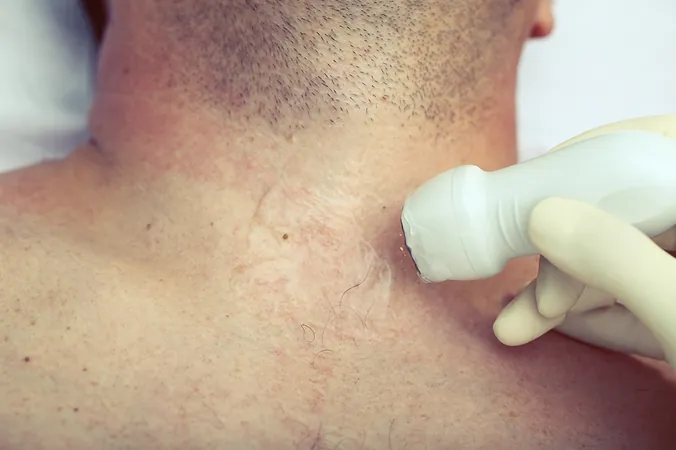
Why Young Men Are Facing a Rising Epidemic of Prostatitis
2025-05-27
Author: Siti
The Alarming Rise of Prostatitis in Young Men
Prostatitis, the inflammation of the prostate gland, is becoming increasingly common among younger men. This condition can lead to painful urination and significant discomfort in the groin, pelvic area, or genitals.
A Closer Look at Prostatitis
While prostatitis can strike men of any age, medical experts, including Dr. Gurpremjit Singh from Livasa Hospital, Hoshiarpur, have observed a worrying trend: more and more young men are suffering from this painful condition. Dr. Singh emphasizes that timely diagnosis and treatment are crucial to prevent serious complications. Key factors contributing to this rise include sedentary lifestyles and heightened stress levels.
Forms and Symptoms to Be Aware Of
Prostatitis comes in multiple forms, including acute bacterial prostatitis, chronic bacterial prostatitis, chronic prostatitis (also known as chronic pelvic pain syndrome), and asymptomatic inflammatory prostatitis. Common signs include painful or frequent urination, particularly at night, difficulty starting urination, and discomfort in the pelvic area.
What Increases the Risk?
Certain factors increase the likelihood of developing prostatitis, such as urinary or reproductive tract infections, medical conditions like HIV/AIDS, and procedures involving urinary catheterization or prostate biopsies. Alarmingly, chronic prostatitis, which constitutes 90-95% of all cases, is particularly prevalent among young men with inactive lifestyles or high stress, leading to early onset of symptoms.
Effective Treatment Options
For those diagnosed with bacterial prostatitis, antibiotics are the standard treatment. Individuals suffering from chronic prostatitis may require medications to alleviate pain and inflammation. Kegel exercises can be beneficial in strengthening pelvic floor muscles, while stress management techniques are also recommended to improve overall wellbeing.
Addressing Benign Prostatic Hyperplasia (BPH)
In cases where Benign Prostatic Hyperplasia (BPH) coexists with prostatitis, treatment options can include hormone-suppressing drugs or medications that relax prostate muscles. In severe cases, surgical intervention may become necessary to remove tissue obstructing the urethra. Fortunately, innovative procedures such as UroLift and water vapor therapy are now available for at-risk patients.
Innovative Modern Treatments
UroLift is a groundbreaking, minimally invasive procedure that employs tiny implants to reposition enlarged prostate tissue, relieving blockage without necessitating tissue removal. Recovery is quick, making it an appealing choice for many. Water vapor therapy, also known as Rezum, harnesses steam to eliminate excess prostate tissue, thereby enhancing urinary flow and alleviating symptoms.
The Crucial Role of Prevention
Regular medical check-ups can make all the difference in detecting prostate issues early on. Dr. Singh encourages men to embrace healthy habits, such as a balanced diet, daily exercise, adequate hydration, and effective stress management. Quitting smoking and moderating alcohol consumption are also essential steps. Men should feel empowered to discuss any prostate concerns with their healthcare providers, particularly after age 50 or sooner if there's a family history of prostate diseases.





 Brasil (PT)
Brasil (PT)
 Canada (EN)
Canada (EN)
 Chile (ES)
Chile (ES)
 Česko (CS)
Česko (CS)
 대한민국 (KO)
대한민국 (KO)
 España (ES)
España (ES)
 France (FR)
France (FR)
 Hong Kong (EN)
Hong Kong (EN)
 Italia (IT)
Italia (IT)
 日本 (JA)
日本 (JA)
 Magyarország (HU)
Magyarország (HU)
 Norge (NO)
Norge (NO)
 Polska (PL)
Polska (PL)
 Schweiz (DE)
Schweiz (DE)
 Singapore (EN)
Singapore (EN)
 Sverige (SV)
Sverige (SV)
 Suomi (FI)
Suomi (FI)
 Türkiye (TR)
Türkiye (TR)
 الإمارات العربية المتحدة (AR)
الإمارات العربية المتحدة (AR)